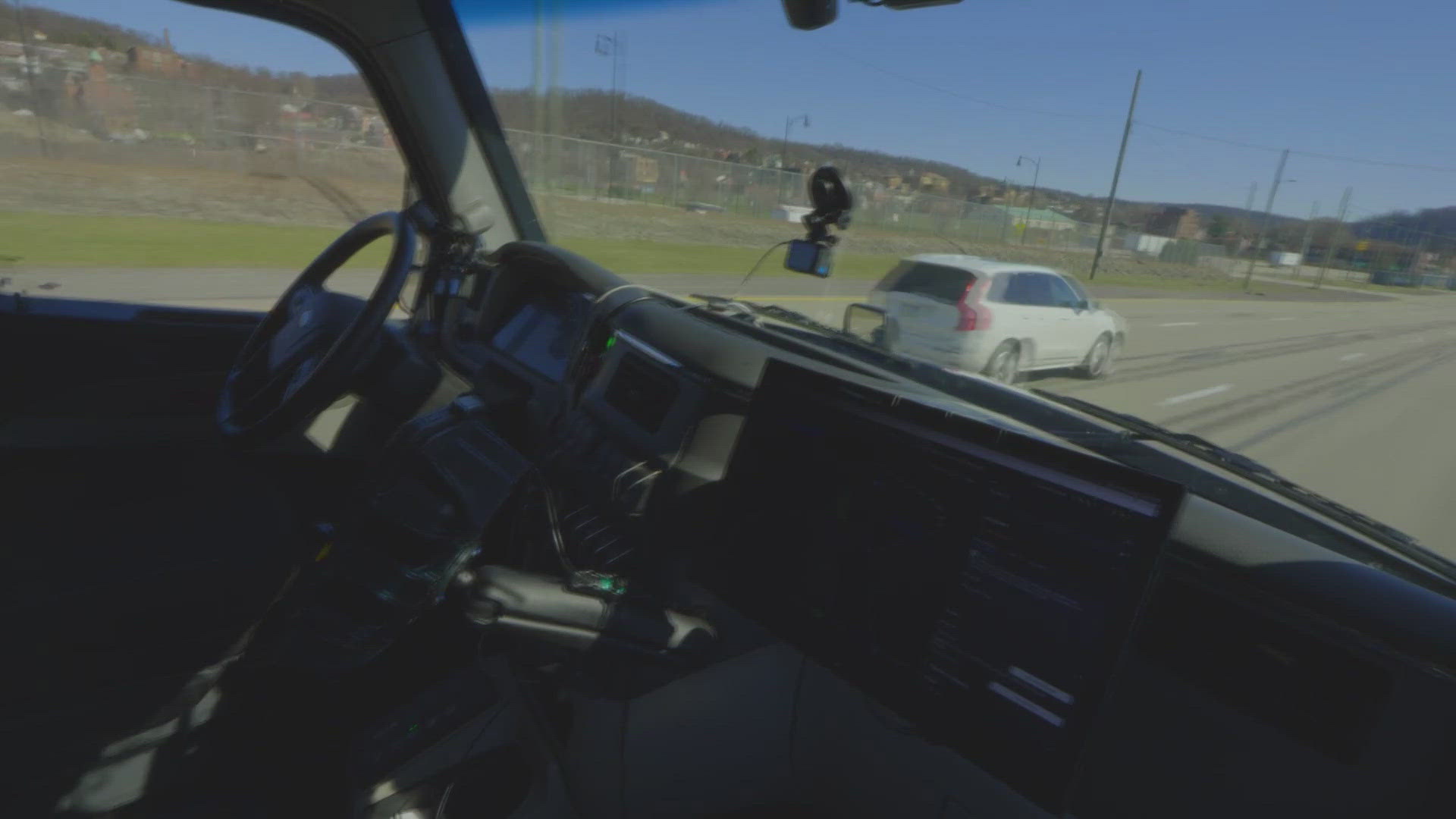SAINT LOUIS, Mo. — Thousands of tractor-trailers crisscross interstates 70, 44 and 55 every day.
In the not-so-distant future, those big rigs may be barreling down those same highways without a driver.
"It's like a moon landing, or like when the Wright brothers invented flight, or even probably like the founders of the Internet felt when something like this took place," said Ossa Fisher, president of Aurora Innovation, an autonomous vehicle company.
Aurora’s 18-wheelers were driven on test tracks without a human driver behind the wheel.
A kaleidoscope of technology including proprietary software, HD cameras, radar and laser sensors allows the big rig to navigate obstacles like dangerous debris and unexpected pedestrians.
"The Aurora driver can see a 360-degree view around the vehicle. It can also see 4 football fields in advance, even at night. That means that it can see a pedestrian 11 seconds faster than the average human or the average camera,” Fisher said.
Since 2021, Aurora trucks have driven 1.5 million miles on public highways, except all of them had a human safety driver in the cab to ensure nothing goes wrong. There were 3 crashes total, Fisher said, all caused by mistakes by human drivers in other cars.
By the end of 2024, Aurora plans to remove the safety driver on public roads and deploy a small number of fully autonomous big rigs in Texas.
But how safe is safe enough?
Fisher said, “We hope to be the gold standard when it comes to safety, and what I mean by that is that we are as safe or safer than the best human driver.”
Professor Philip Koopman, an autonomous vehicle safety expert at Carnegie Mellon University, said a lack of government regulation forces consumers to trust the companies.
"The Federal Government for years has had a non-regulatory approach, and I'm quoting their words," Koopman said.
There are some states with laws around autonomous trucks. Missouri and Illinois do not.
Koopman said, “Really nobody knows how this going to turn out. We put them on the roads, and the companies think they're probably safe. I'm sure they want them to be safe. I'm sure they're trying to be as safe as they can, but no one's going to know how this turns out until they go on the road, and we see.”
Fisher said bi-state drivers could be sharing the road with an empty big rig soon.
“Over the next 5 or so years you can, even in St. Louis, the Aurora driver will be operating where you are,” she said.
But what does this technology mean for truck drivers? The American Trucking Association estimates the U.S. is facing a truck driver shortage of about 60-thousand drivers.
A spokesperson from ATA said the organization views autonomous semis as "a tool to assist the nation's 3.5 million professional truck drivers, not a threat to displace them."

